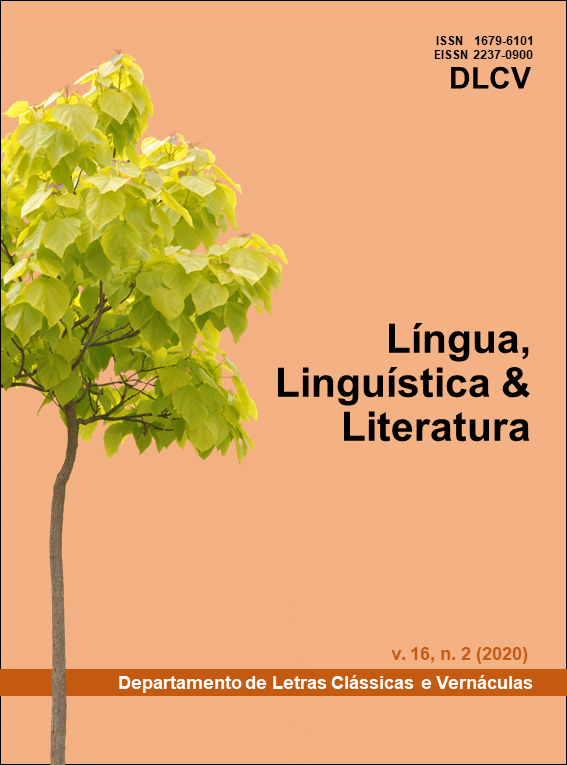Deus e o nada
a natureza criadora em Hilda Hilst e Clarice Lispector
DOI:
https://doi.org/10.22478/ufpb.2237-0900.2020v16n2.55983Abstract
This article aims to present how the figure of God manifests nature (physis) in “Perdoando Deus”, by Clarice Lispector, and in poem verses of “Poemas Malditos Gozosos e Devotos”, by Hilda Hilst. The two writings dialogue by subverting the word in its functional, trivial sense, which does not allow the establishment of Nothing - a term so dear to the works of these authors. Nothing, both in Clarice and Hilda, has nothing to do with nihilism, on the contrary: it says about the creative act, which only comes to light when a (empty) space is opened capable of putting language back into its silence. It is for this reason that the figure of God is present in the two texts that we will explain: it gives rise to the fullness of the creative act, which is only possible when Nothing is on the scene. God is this being who creates and destroys, but such destruction is also creative, because it houses possibilities. We use, to discuss these aspects, the hermeneutic method, which ends in a cyclical movement which allows the interpreter to also be interpreted. In order to dialogue with the works explained, we consider Martin Heidegger's notes on thuth.
Downloads
Downloads
Published
How to Cite
Issue
Section
License
Copyright (c) 2020 DLCV - Língua, Linguística & Literatura

This work is licensed under a Creative Commons Attribution-ShareAlike 4.0 International License.
Ao submeter originais a este periódico, o autor está automaticamente concordando com as diretrizes editoriais da Revista do DLCV e, além disso, cedendo os direitos autorais relativos aos trabalhos publicados, mantendo para si os créditos da propriedade intelectual e/ou cultural.























